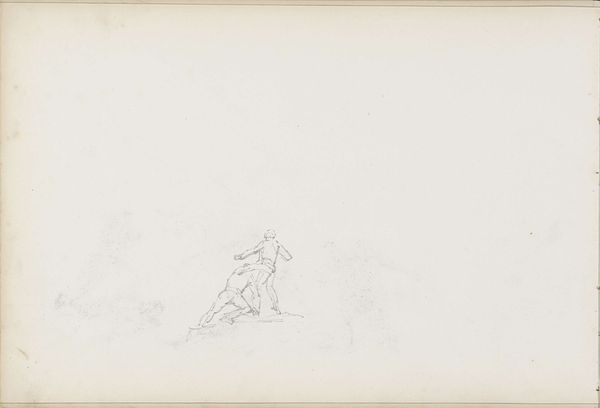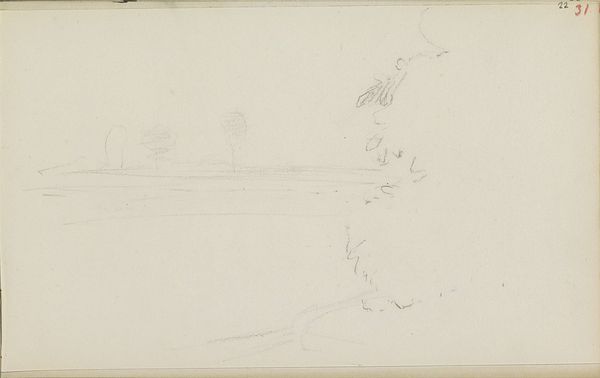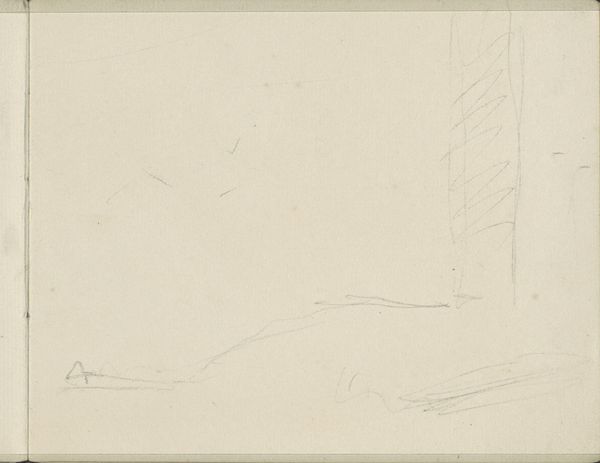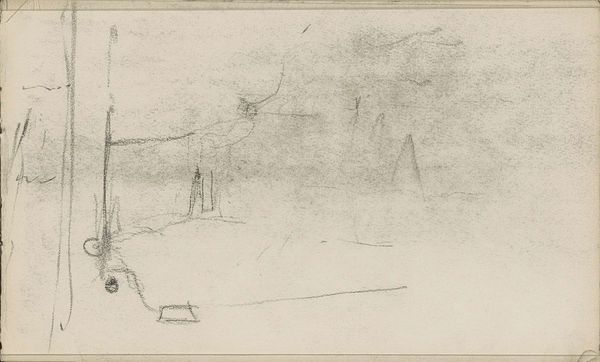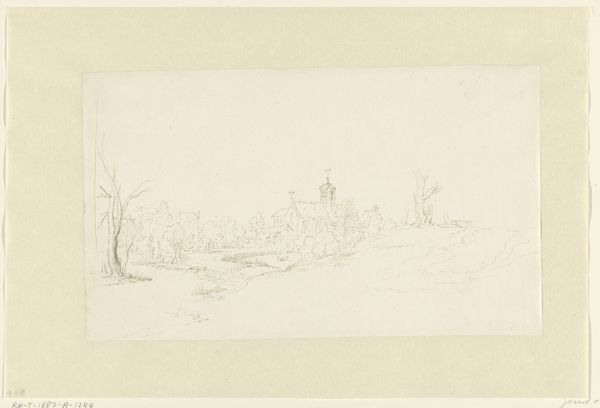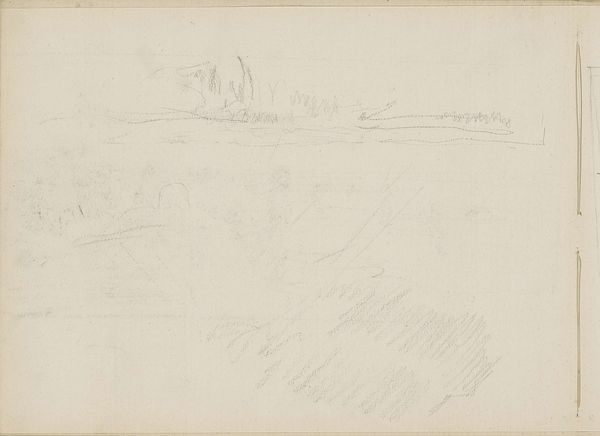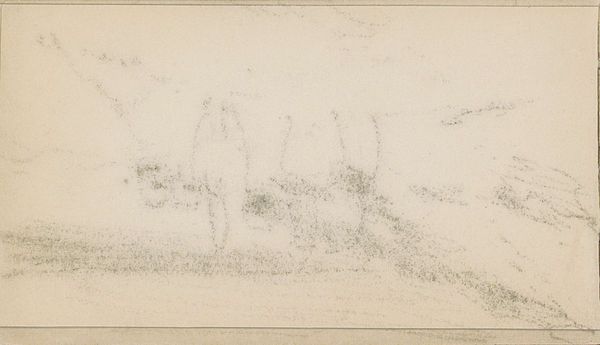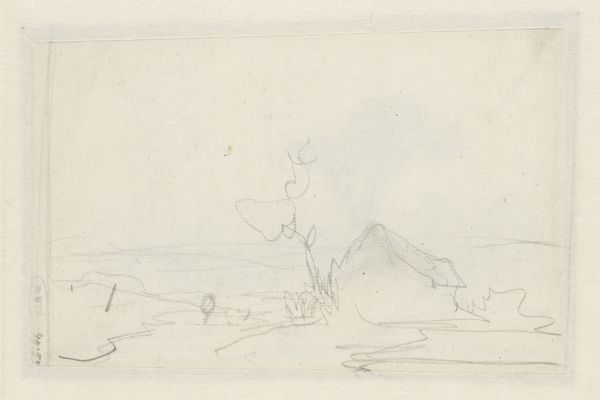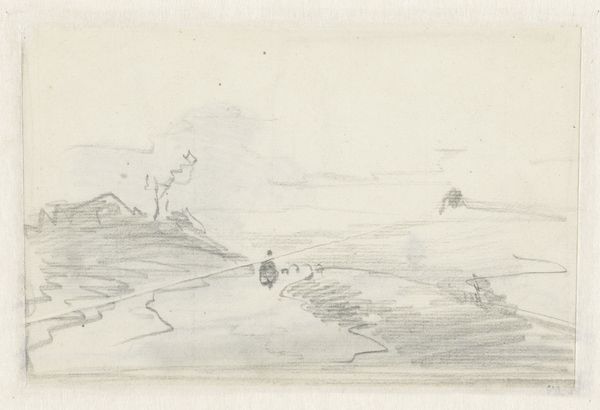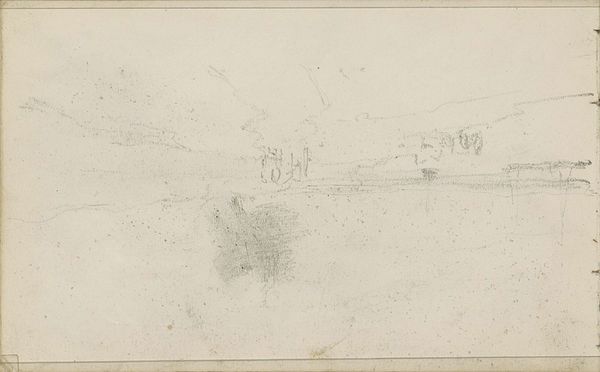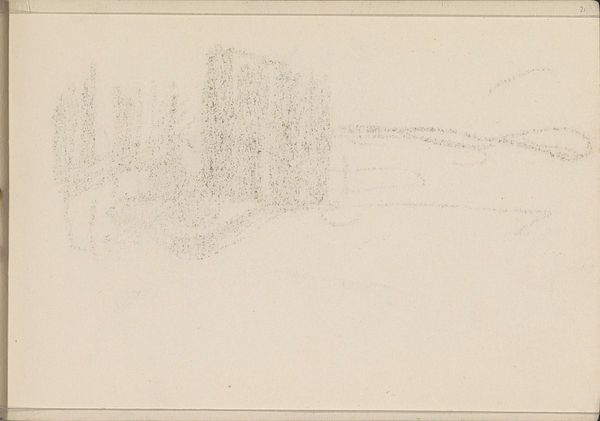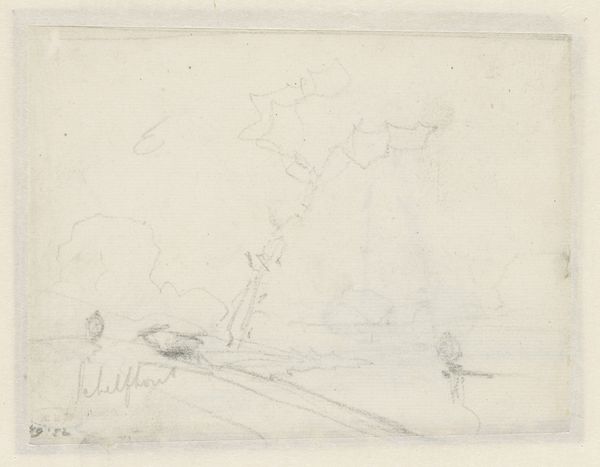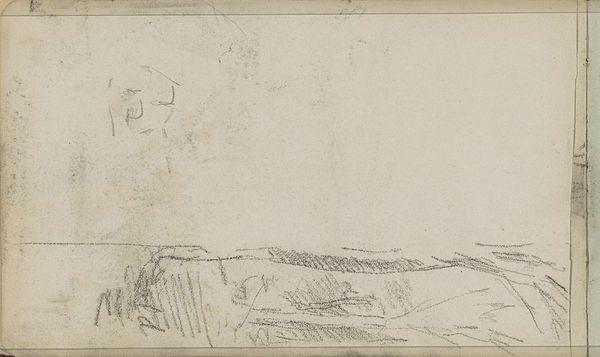
drawing, pencil
#
drawing
#
landscape
#
pencil
#
realism
Copyright: Rijks Museum: Open Domain
Editor: This is "Landschap met huizen en molens," or "Landscape with Houses and Windmills," a pencil drawing by Petrus Johannes Schotel, made sometime between 1841 and 1865. It's surprisingly sparse, almost ghostly. What strikes you about it? Curator: Well, considering Schotel’s reputation for detailed marine paintings, this drawing provides a fascinating glimpse into the socio-economic role of windmills in 19th-century Dutch society. Windmills weren't merely picturesque; they were integral to the Dutch economy, powering industries like milling grain and draining land. This drawing, with its simplified rendering, can be seen as a commentary on the foundational elements of Dutch life. Do you think this understated quality enhances or diminishes its power? Editor: I think it enhances it. The sketchiness almost highlights the basic nature of the subjects represented: shelter and industry. Does the setting tell us anything about how art was being commissioned or consumed during this period? Curator: Absolutely. The Dutch art market of the mid-19th century saw a growing demand from the middle class for depictions of everyday life and national identity. Schotel, primarily known for seascapes, might have created this landscape as part of a series aimed at this expanding market, demonstrating a connection between art and national pride. Does that give you a different appreciation for the piece? Editor: It does. Thinking of it less as just a sketch and more as a deliberate piece meant to speak to a broader audience, that adds another layer of depth. Curator: Indeed. And by stripping away the details, perhaps Schotel encourages viewers to contemplate the very essence of Dutch identity, connecting to core societal elements, and not necessarily material possessions. Editor: I never thought of it that way before. Seeing the drawing within its historical and economic context really changes my understanding of it. Curator: Precisely! It's about how art reflects and shapes social values and historical circumstances. Hopefully others are inspired to ask questions about social context and art, too.
Comments
No comments
Be the first to comment and join the conversation on the ultimate creative platform.
